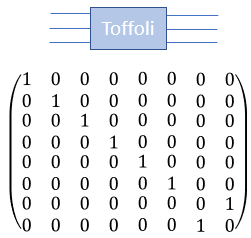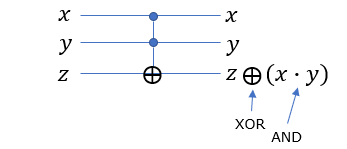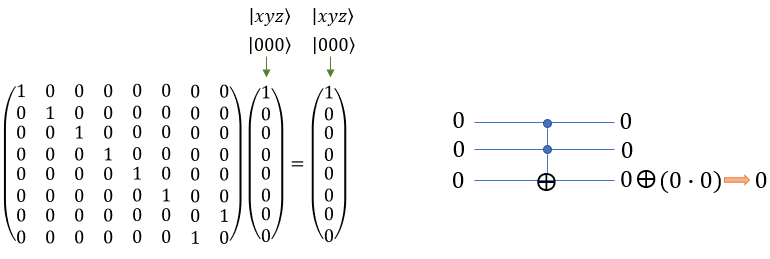|
|
||
|
The Toffoli gate is also known as the Controlled-Controlled-NOT (CCNOT) gate. It's a 3-qubit gate, meaning it acts on three qubits simultaneously. The first two qubits are called "control" qubits, while the third is called the "target" qubit. The Toffoli gate performs a specific operation: it flips (or changes) the state of the target qubit only if both control qubits are in the 1 state. If the control qubits are not both in the 1 state, the Toffoli gate leaves the target qubit unchanged. In layman's terms, imagine you have three light bulbs, each representing a qubit. The first two light bulbs are the control light bulbs, and the third one is the target light bulb. The Toffoli gate acts like a switch that turns the target light bulb on if and only if both control light bulbs are already on. If one or both control light bulbs are off, the target light bulb remains unchanged. The Toffoli gate is essential in quantum computing because it's reversible (you can undo its operation) and it can be used to construct other more complex gates and operations. Additionally, it's a key component in the design of quantum algorithms and circuits that can perform error correction, which is crucial for the development of practical quantum computers. In symbol and mathematical form, it is presented as follows. It takes 1 bit as input and return 1 bit as output. If you look into the matrix form, you would notice that it takes 8x1 vector (representing 3 qubit) and swap the elements within the vector.
If I you plug in the state vector for |000> , |001>, |010>, |011>, |100>, |101>, |110> and |111> into Toffoli gate matrix equation, you can get the output as follows. You would see that the element in the statevector get swaped by the gate Toffoli matrix.
|
||









